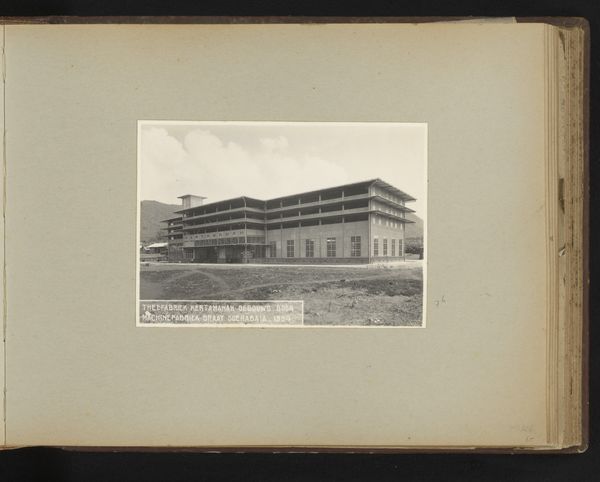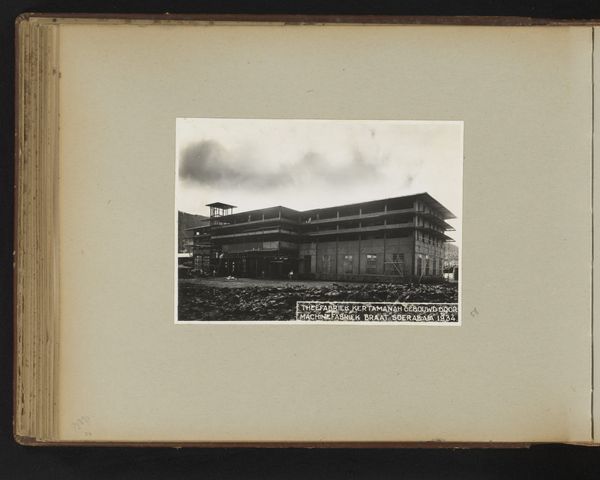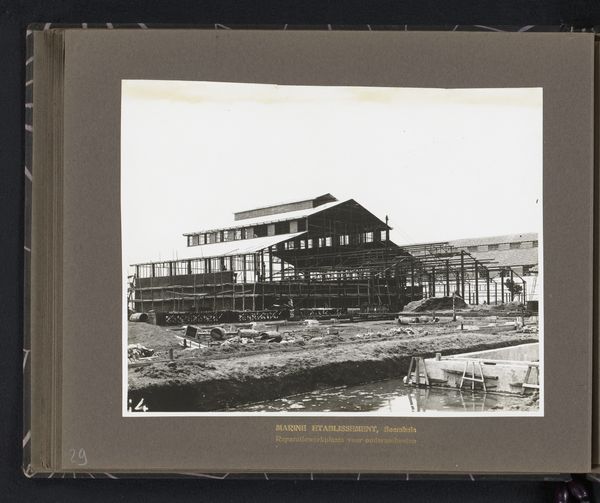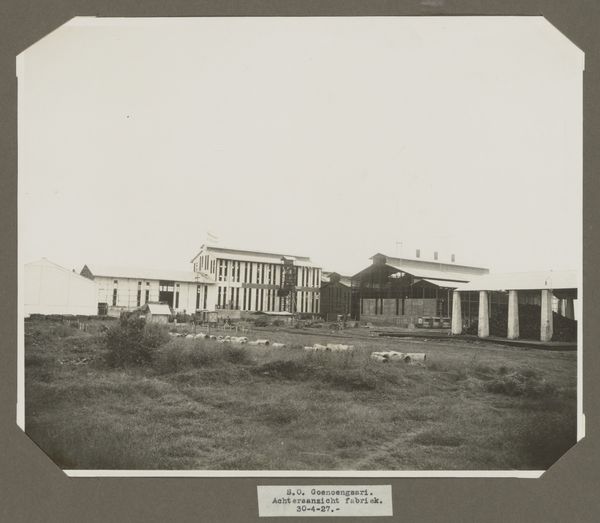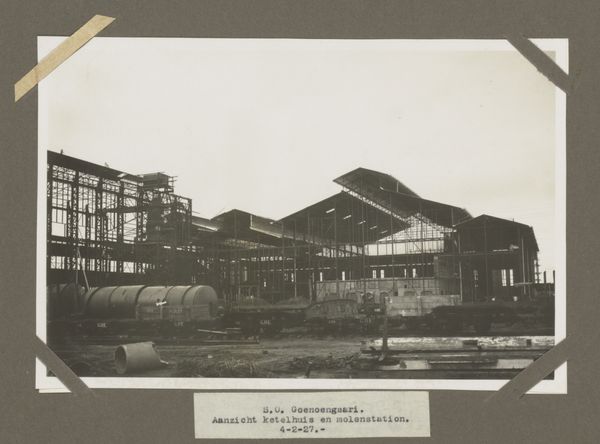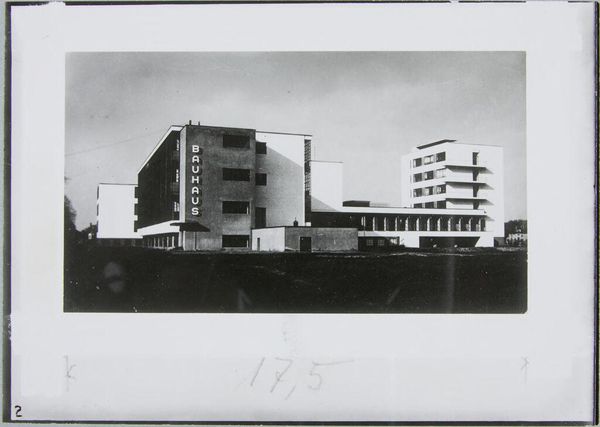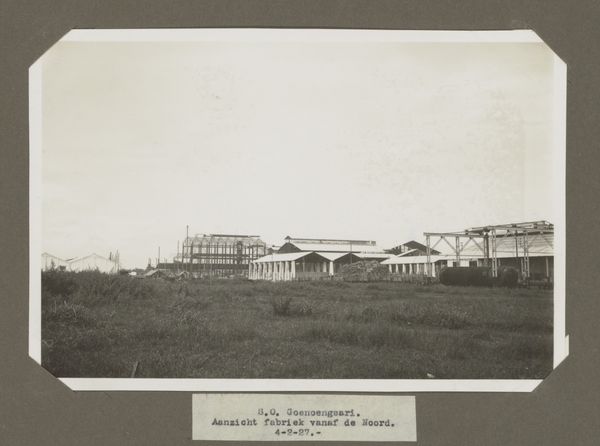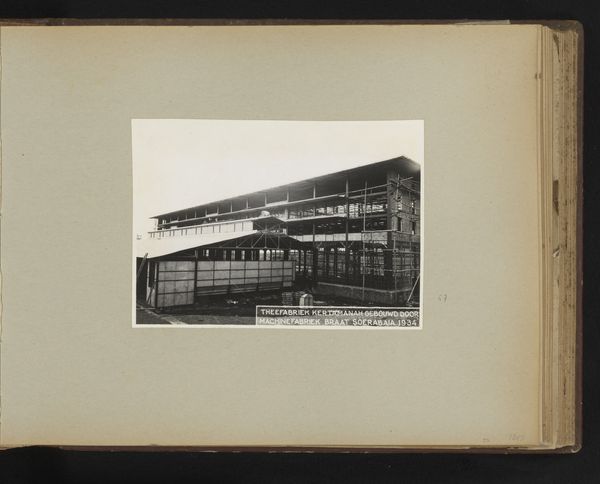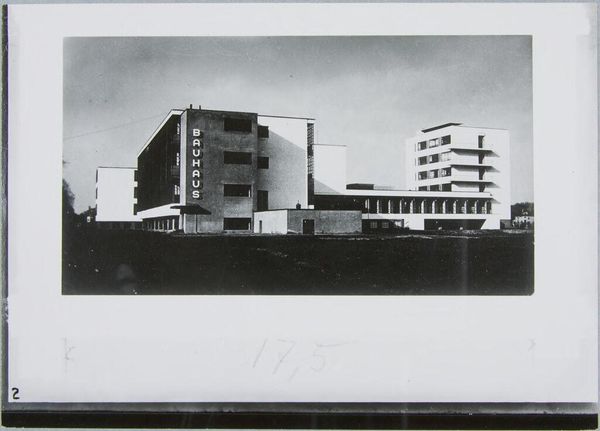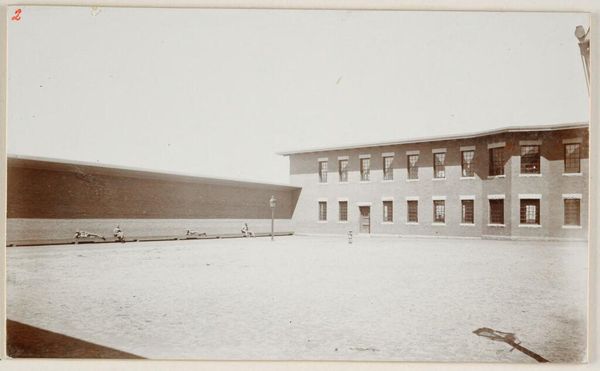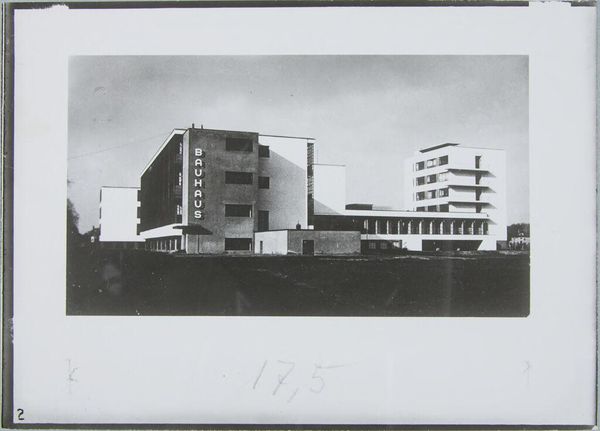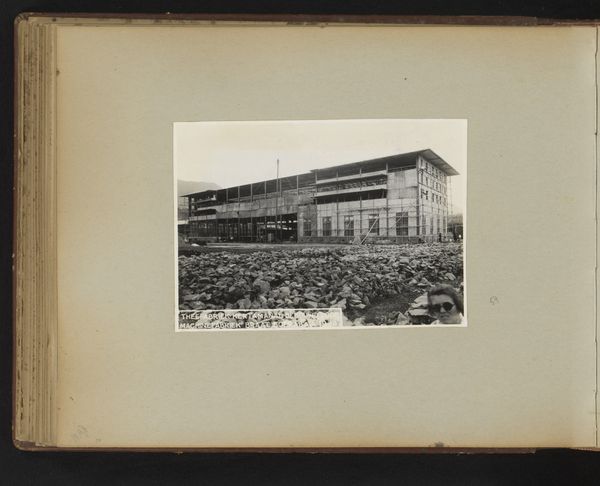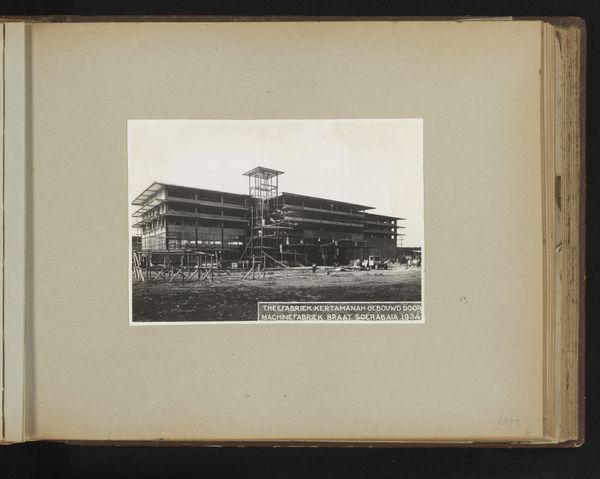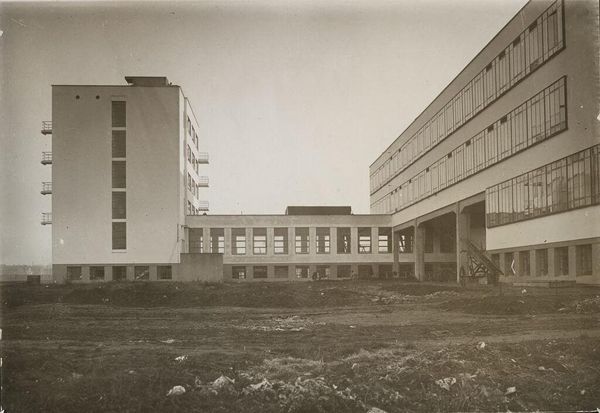
photography
#
photography
#
cityscape
#
modernism
Dimensions: height 170 mm, width 230 mm
Copyright: Rijks Museum: Open Domain
Curator: This intriguing photograph, titled "Semboro", was created sometime between 1931 and 1934 by Atelier Kurkdjian. It's a modernist-style cityscape, capturing a moment frozen in time. Editor: There's a stillness to this image. The reflective water in the foreground almost mirrors the sky, softening the industrial feel of the buildings. The long, low structure gives a sense of serenity, though it seems an odd serenity in an urban, industrial area. Curator: Atelier Kurkdjian’s work provides insight into the modernization of Indonesian cities and landscapes during that period, revealing an aesthetic approach that shaped perceptions of progress and national identity in that era. This photography likely played a role in colonial discourse of progress, illustrating how photographic images construct notions of advancement. Editor: Yes, the geometry is stark but not jarring, with the repeating vertical lines and long horizontals creating a rhythm. I notice those repeated horizontals on the building echo on in the reflection, creating a distinct impression that civilization and landscape can work together. What do you see in those forms? Curator: I’m especially drawn to the choice to depict a working town as the primary focus of photography. Its creation falls between both World Wars, making this a distinct period of innovation that sought the progression and celebration of common infrastructure as beautiful and hopeful. This artistic celebration can also lead to the illusion of colonial success, hiding local social implications with strong image promotion. Editor: An illusion sustained, in part, by these reflective spaces—literal and metaphorical? A tranquil mirror, masking complex colonial forces? Curator: Exactly, Atelier Kurkdjian made great images during moments of deep national shifts. Considering his larger work can really reveal these periods of change in a profound way. Editor: The reflection helps amplify this still photography into more significant historical narratives of that time. Curator: Yes, indeed. The photograph, like many from Atelier Kurkdjian, makes the city itself the protagonist, in all of its fraught beauty. Editor: It leaves one with a distinct impression and much to consider regarding history and image construction.
Comments
No comments
Be the first to comment and join the conversation on the ultimate creative platform.
